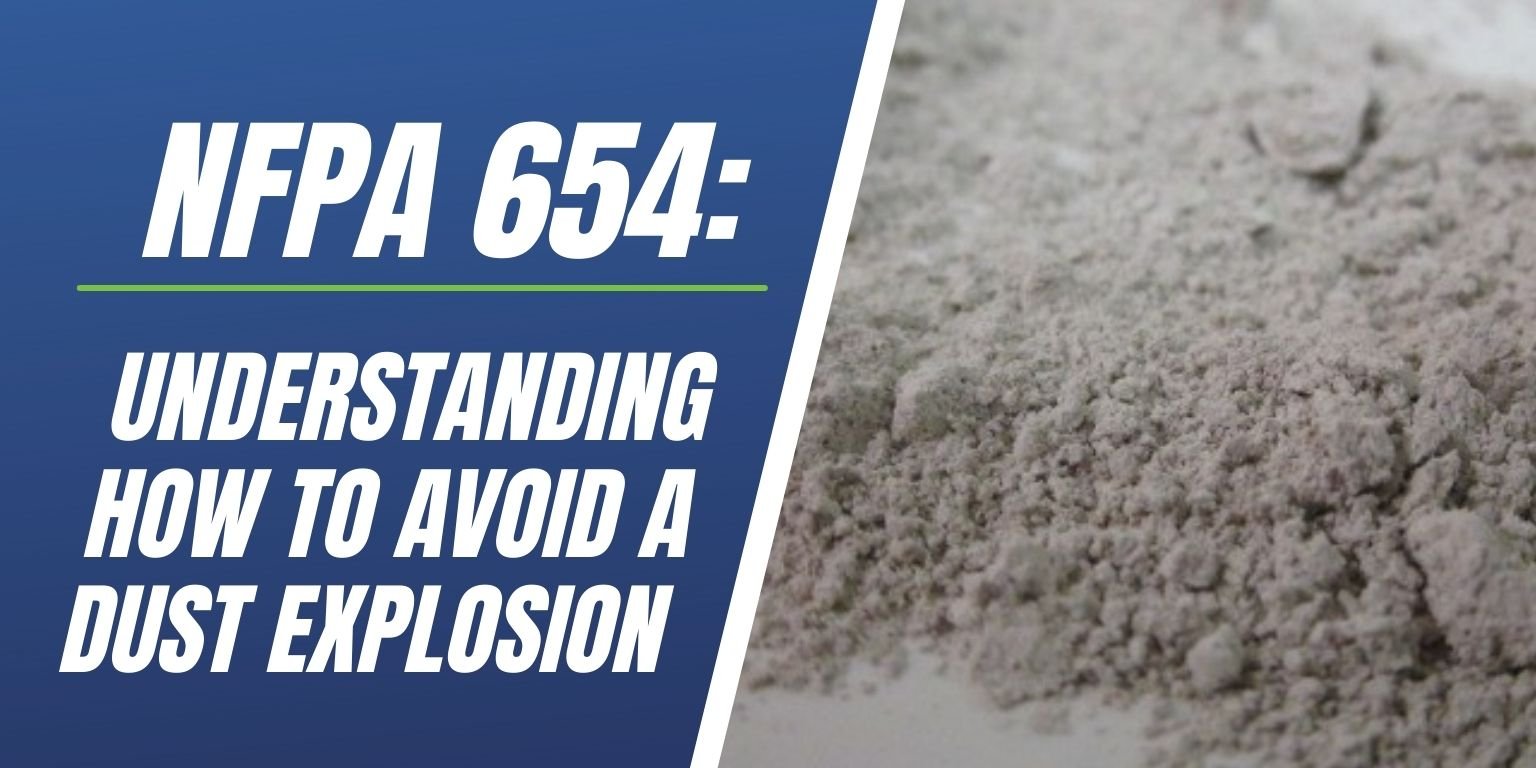
Dust is created from the manufacturing process within most facilities; everything from making plastic bottles to aluminum tires creates this industrial dust. When this dust is not contained it can create hazardous conditions for workers within the building, and several rules and standards have been put in place outlining the proper way to manage these dust accumulations.
Loose dust can create a slip or trip hazard, respiratory or eye injuries, and can make machinery operate less efficiently or safely. One major hazard that is often overlooked is the dust explosion hazard which is created from improper cleaning of combustible dust
Combustible Dust Cleaning Methods that go Against NFPA 654
When this dust is cleaned using unapproved methods it can disturb the dust and cause it to create a dust cloud. Depending on the dust involved, this cloud can be highly explosive, and hundreds of workers have died from these dust clouds igniting.
- Using compressed air to clean dust accumulations. Blowing dust using compressed air creates the dangerous dust cloud that can easily ignite.
- Using regular vacuum cleaners that are not grounded or static dissipative. Plastic hoses and collection areas on a standard vacuum can create static electricity when dust particles move through it, and the exhaust vent can blow dust into a cloud. Even a spark from static electricity can be enough to ignite a combustible dust cloud.
Unfortunately, there have been many fires or explosions that have been created when someone was performing cleaning this way. So then, what does The National Fire Protection Association (NFPA) say are the approved ways to clean combustible dust?
NFPA 654 Approved Ways of Cleaning Combustible Dust
NFPA 654, 'Standard for the Prevention of Fire and Dust Explosions from the Manufacturing, Processing, and Handling of Combustible Particulate Solids’ is used to manage and prevent combustible dust hazards. It covers what industries are at risk, what creates combustible dust risks, how to prevent combustible dust explosions, and other important information. However, Chapter 8 of this code is particularly relevant to the combustible dust remediation services. It addresses the housekeeping and cleaning procedures, and provides details for the frequency that combustible dust needs to be cleaned to reduce risk, what types of methods can safely be used to clean the combustible dust, and what cleaning methods can actually create more of a risk.
Safety Gear
Making sure that wearing safety gear while cleaning combustible dust is an important part of cleaning combustible dust. Using the proper PPE gear will help to ensure the health and safety of the individual who is removing the dust.
- Hard Hat
- Safety Glasses
- N95 Respirator
- Steel Toe Boots
- Hearing Protection
- Gloves
- Safety Harness and Lanyard when working off lifts or scaffolding
- Flame-Resistant Clothing (FRC) when applicable
Safety Equipment
Lastly, there are only a few vacuums that are safe to use when cleaning combustible dust. Many dust collection systems just blow the dust around and keep it in the air, trying to have it eventually move into a collection area, but these cause hazards by creating an explosive dust cloud and making the air quality lower. Other dust collection systems do actually suck in and filter the air, but this causes dust to settle in the ductwork leading to the collection system. If the collection area becomes full, the dust can begin blowing backwards out of the vents, making the situation worse than before, and in the case of a fire the dust acts like a fuel, letting the fire travel throughout the building.
- Explosion-proof vacuums
- HEPA-Filtered
- Anti-static / Intrinsically Safe
- Grounded
- Rated for Class I, II, and III environments
- Static dissipative hose with embedded copper grounding wire
- Aluminum brush heads with aluminum extension poles
Using the wrong methods and equipment to clean combustible dust can be catastrophic. From protective clothing to vacuum hoses, every piece of equipment counts when it comes to safety and compliance.
Training and Certification
Having the proper training for cleaning combustible dust is one of the most important parts of cleaning combustible dust. Technicians should be trained in OSHA’s 10- or 30-hour Safety, Aerial Lifts, Confined Spaces, First Aid, CPR, and Combustible Dust Safety and Awareness.
In OSHA’s Combustible Dust National Emphasis Program, two of the most common citations were improper housekeeping, including combustible dust accumulation, and use of compressed air to blow down combustible dust. This is why a professional cleaning company needs to come in to remove combustible dust. They will have been provided with the proper PPE, OSHA training, and industrial dust removal equipment.
Knowing how to properly clean combustible dust is important not only for the safety of you and your employees, but in also preventing future dust explosions.
Why Hughes Environmental
Hughes Environmental has performed combustible dust cleaning in a wide array of facilities and has dealt with many types of combustible dust. Our technicians that are trained, certified and up-to-date on common best practices. We have an OSHA trainer on staff, and our technicians have been through OSHA 10- or 30-hour training. We also have Council-certified Indoor Environmentalists (CIE) and Council-certified Microbial Remediators (CMR) on staff.
Contact Us Here or call us at 888-845-3952

